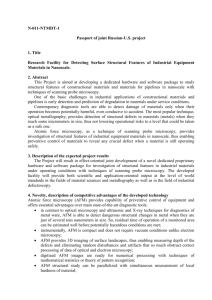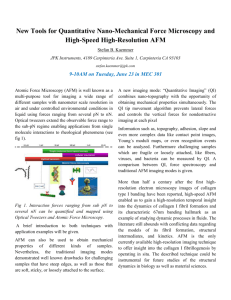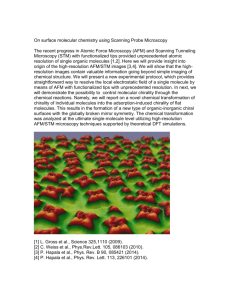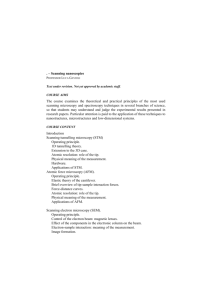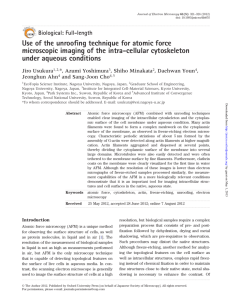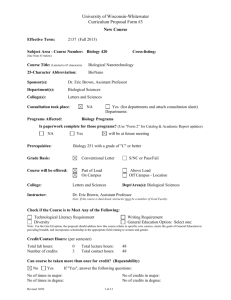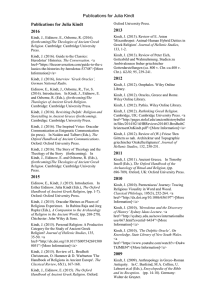Scanning probe microscopy: from cells to single atoms
advertisement
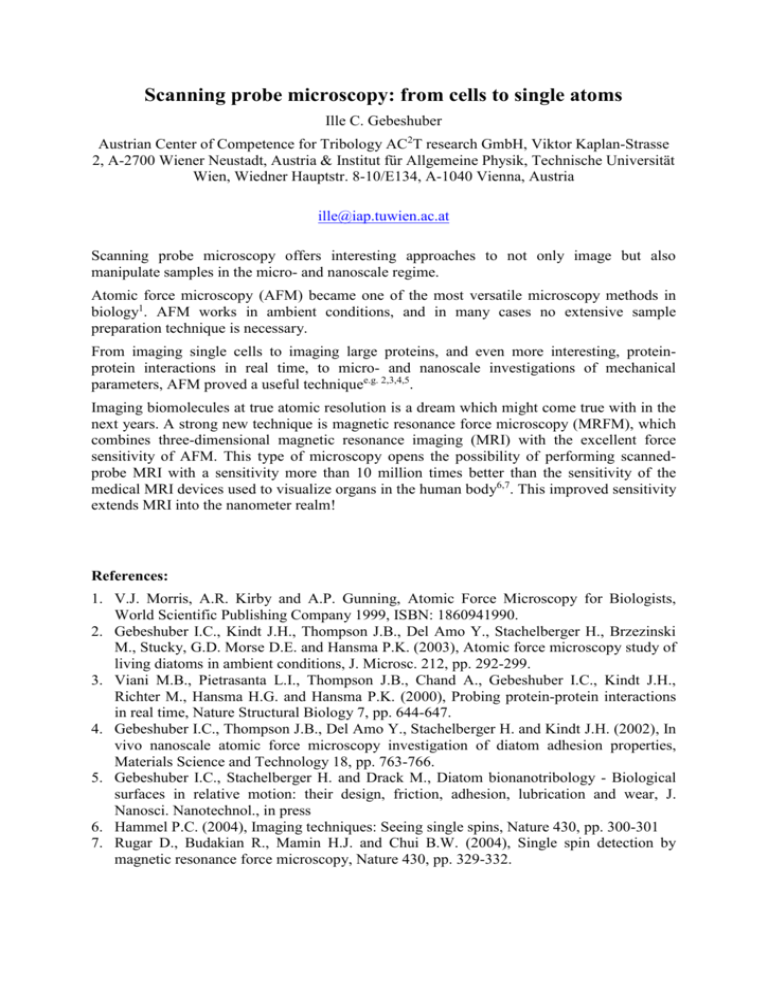
Scanning probe microscopy: from cells to single atoms Ille C. Gebeshuber Austrian Center of Competence for Tribology AC2T research GmbH, Viktor Kaplan-Strasse 2, A-2700 Wiener Neustadt, Austria & Institut für Allgemeine Physik, Technische Universität Wien, Wiedner Hauptstr. 8-10/E134, A-1040 Vienna, Austria ille@iap.tuwien.ac.at Scanning probe microscopy offers interesting approaches to not only image but also manipulate samples in the micro- and nanoscale regime. Atomic force microscopy (AFM) became one of the most versatile microscopy methods in biology1. AFM works in ambient conditions, and in many cases no extensive sample preparation technique is necessary. From imaging single cells to imaging large proteins, and even more interesting, proteinprotein interactions in real time, to micro- and nanoscale investigations of mechanical parameters, AFM proved a useful techniquee.g. 2,3,4,5. Imaging biomolecules at true atomic resolution is a dream which might come true with in the next years. A strong new technique is magnetic resonance force microscopy (MRFM), which combines three-dimensional magnetic resonance imaging (MRI) with the excellent force sensitivity of AFM. This type of microscopy opens the possibility of performing scannedprobe MRI with a sensitivity more than 10 million times better than the sensitivity of the medical MRI devices used to visualize organs in the human body6,7. This improved sensitivity extends MRI into the nanometer realm! References: 1. V.J. Morris, A.R. Kirby and A.P. Gunning, Atomic Force Microscopy for Biologists, World Scientific Publishing Company 1999, ISBN: 1860941990. 2. Gebeshuber I.C., Kindt J.H., Thompson J.B., Del Amo Y., Stachelberger H., Brzezinski M., Stucky, G.D. Morse D.E. and Hansma P.K. (2003), Atomic force microscopy study of living diatoms in ambient conditions, J. Microsc. 212, pp. 292-299. 3. Viani M.B., Pietrasanta L.I., Thompson J.B., Chand A., Gebeshuber I.C., Kindt J.H., Richter M., Hansma H.G. and Hansma P.K. (2000), Probing protein-protein interactions in real time, Nature Structural Biology 7, pp. 644-647. 4. Gebeshuber I.C., Thompson J.B., Del Amo Y., Stachelberger H. and Kindt J.H. (2002), In vivo nanoscale atomic force microscopy investigation of diatom adhesion properties, Materials Science and Technology 18, pp. 763-766. 5. Gebeshuber I.C., Stachelberger H. and Drack M., Diatom bionanotribology - Biological surfaces in relative motion: their design, friction, adhesion, lubrication and wear, J. Nanosci. Nanotechnol., in press 6. Hammel P.C. (2004), Imaging techniques: Seeing single spins, Nature 430, pp. 300-301 7. Rugar D., Budakian R., Mamin H.J. and Chui B.W. (2004), Single spin detection by magnetic resonance force microscopy, Nature 430, pp. 329-332.



